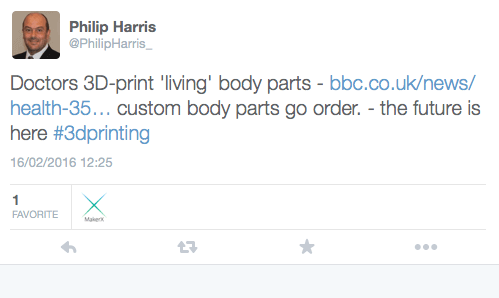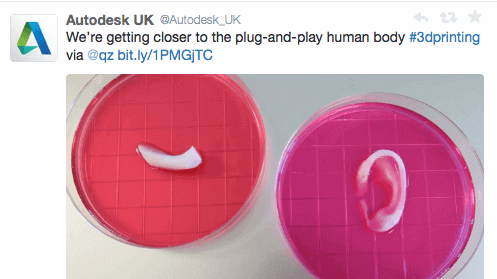
If you’re into 3D printing, Rachel Park doesn’t need an introduction. As a journalist, she covered the 3D printing and additive manufacturing sector since 1996. She led 3D Printing Industry as Editor in Chief and also edited Disruptive Magazine for 3D Printshow. Currently, Rachel works as an independent freelance journalist and runs her own copywriting and editing company.
Bioprinting has Taken a Major Step Forward
The amazing research of Dr Anthony Attala and his team has taken a major step forward. The results of his most recent research into 3D bioprinting transplantable body parts, carried out at the Wake Forest Institute, was published last week in Nature Biotechnology and centres around the development of the ITOP, or the integrated tissue-organ printer. The news inevitably spread rapidly and generated some misleading headlines as well as naïve responses — not surprising I guess but still unhelpful in the fight against 3D printing hype.

Having met Dr Attala a couple of years ago in London, I have been a follower of his work and a big fan of his vision. His dedication, focus and determination in his field are admirable and beyond doubt, but while it is imperative that his work progresses ahead of fulfilling the promise it offers, responsible reporting of — and responses to — said progress are equally imperative.
While many news outlets focused wholly on the progressive results of “3D printing” sustainable living muscle, cartilage and bone tissues, which is, of course, notable; I was personally drawn to the technological developments that enabled this which was largely overlooked outside of naming the platform. Ten years in development, the ITOP seems to signal a novel approach to the discipline of bioprinting. The Nature Biotechnology article describes how the ITOP has been developed to overcome issues in bioprinting with “traditional” 3D printing processes such as extrusion, jetting and nomenclature I hadn’t heard before (every day is a school day!), laser-induced forward transfer (LIFT). The problems encountered with these processes for bioprinting are outlined in the journal article and illustrate a common problem with 3D printing in general, not just bioprinting — the trade-off between processes.
More Realism, less Hype
Each process offers distinct and compelling advantages, but always disadvantages too, which can frustrate the fulfillment of applications. In an industrial setting — the disadvantages of a given 3D printing process can usually be offset by other processes (additive or traditional) or further finishing procedures. This can be time-consuming and, of course, economics come into play, but, no one’s life or well-being hangs in the balance. When producing a part of the body to replace the original that has been damaged beyond repair, the stakes are higher — much higher and there is no margin for error.
To this end, the ITOP system has been demonstrated to overcome many of the limitations of the listed processes above for bioprinting, in that it is more of a very precise, pick & place system. The latest research results have demonstrated the Wake Forest team are making incredible progress. But, as has become all too familiar, publish promising research results and reporters and social media spin it to silly proportions. I know a common refrain is it’s “to be expected” and “typical” but I find that so incredibly exasperating. Among many others, were these two gems, at least, one of which really should have known better:
“The plug-and-play human body.” — Really!??
What even is that? Feel free to post any suggestions in the comments section ….
License: The text of "Bioprinting Research is Significant But Keep it in Proportion!" by All3DP is licensed under a Creative Commons Attribution 4.0 International License.

